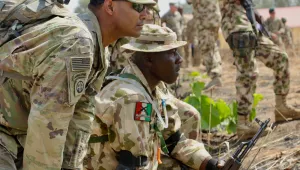Introduction
As the United States withdraws from Afghanistan, it leaves violence and uncertainty in its wake. The election of a new Afghan president gives some grounds for optimism and could improve the fraught relationship between Afghanistan and the U.S. But no Afghan election since the 2001 intervention has brought about a diminution in violence — and the conflict shows no signs of abating. The Taliban is powerful, tenacious and increasingly deadly. Civilian casualties are rising and the fighting forces some 10,000 Afghans from their homes every month. The linchpin of the U.S. exit strategy, Afghan national security forces, have critical capability gaps and are suffering huge losses of up to 400 a month due to escalating insurgent attacks. The Afghan government is corrupt and anemic, reconstruction is faltering and the region continues to be unstable.
Over the past twelve years, the United States has spent $650 billion dollars in Afghanistan and lost over 2,000 lives. Close to 20,000 U.S. service members have been wounded. Democratic institutions have been established in Afghanistan, and there has been progress in human rights, infrastructure and services, such as health and education. But how did such vast and sustained investments not deliver a more favorable outcome? Conditions were undoubtedly challenging, but most observers — and indeed U.S. officials — agree that major mistakes were made. To name but a few, the U.S. backed power-holders widely seen by Afghans as abusive and unjust, which undermined the Afghan government’s legitimacy and generated powerful grievances; coalition forces caused too many civilian casualties; aid was often wasteful or ineffective, and swung from being insufficient, in the early 2000s, to excessive, thereby fueling corruption; and there was no effective U.S. political strategy for Afghanistan or the region.
But the most egregious error of the United States was to pursue a strategy founded on a misreading of its enemy.
Waldman, Matt. “Strategic Empathy: The Afghanistan Intervention Shows Why the U.S. Must Empathize with its Adversaries.” New America Foundation, April 2014
The full text of this publication is available via New America Foundation.





